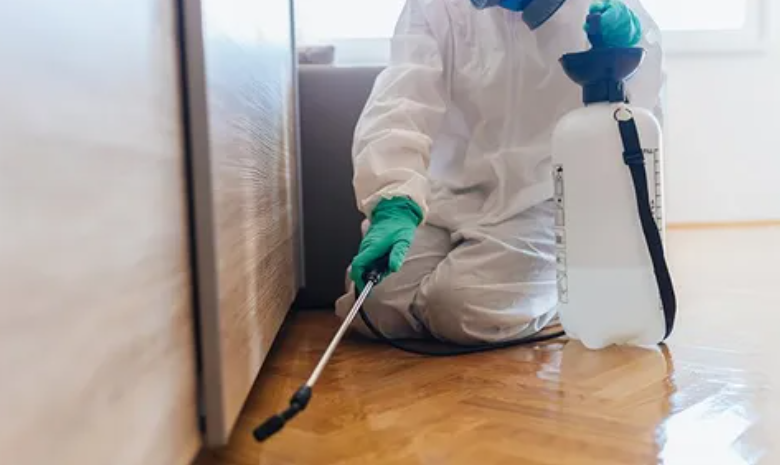Chemical Treatments for Bedbugs: Are They Safe?

Bedbugs are a persistent and frustrating pest problem that can infest homes, hotels, and even public transportation. These tiny, blood-sucking insects are notoriously difficult to eliminate, leading many people to turn to chemical treatments as a solution. However, the safety of these chemicals is a growing concern, especially for households with children, pets, or individuals with respiratory conditions. This article explores the effectiveness of chemical treatments for bedbugs, their potential risks, and safer alternatives.
Understanding Bedbug Infestations
Before discussing chemical treatments, it’s important to understand how bedbug infestations occur. Bedbugs (Cimex lectularius) are small, reddish-brown insects that feed on human blood, usually at night. They hide in mattresses, furniture, cracks in walls, and even electrical outlets, making them difficult to detect and eradicate.
Signs of a bedbug infestation include:
- Small blood stains on sheets
- Dark fecal spots on mattresses
- Shed exoskeletons
- A musty odor
- Itchy, red bite marks on the skin
Because bedbugs reproduce quickly, early detection and treatment are crucial.
Common Chemical Treatments for Bedbugs
Chemical treatments are widely used to combat bedbugs, but not all pesticides are equally effective or safe. The most common types include:
1. Pyrethrins and Pyrethroids
Pyrethrins are natural insecticides derived from chrysanthemum flowers, while pyrethroids are synthetic versions. These chemicals attack the nervous system of Bedbugs control ( bekæmpelse af væggelus ), causing paralysis and death.
Effectiveness:
- Work well against adult bedbugs but may not kill eggs.
- Some bedbug populations have developed resistance.
Safety Concerns:
- Can cause skin irritation, dizziness, and respiratory issues in humans.
- Toxic to fish and beneficial insects like bees.
2. Neonicotinoids
Neonicotinoids are synthetic chemicals that disrupt the nervous system of insects. They are often used when bedbugs show resistance to pyrethroids.
Effectiveness:
- Effective against resistant bedbugs.
- Long-lasting but may require multiple applications.
Safety Concerns:
- Linked to bee population decline.
- Potential risk to human nervous systems with prolonged exposure.
See also: Powering the Future at Home: EV Charger Installation in Telford
3. Insect Growth Regulators (IGRs)
IGRs interfere with bedbug development, preventing them from reaching maturity and reproducing.
Effectiveness:
- Slow-acting but disrupts the bedbug life cycle.
- Often used in combination with other pesticides.
Safety Concerns:
- Generally low toxicity to humans and pets.
- May still cause mild irritation.
4. Desiccants (Diatomaceous Earth, Silica Gel)
Desiccants work by drying out the bedbugs’ exoskeleton, leading to dehydration and death.
Effectiveness:
- Non-chemical and long-lasting.
- Takes time to work but is effective when applied correctly.
Safety Concerns:
- Inhalation can cause lung irritation.
- Food-grade diatomaceous earth is safer than industrial versions.
5. Fumigation (Sulfuryl Fluoride, Vikane Gas)
Fumigation involves sealing a space and releasing a gas that penetrates deep into furniture and walls to kill bedbugs.
Effectiveness:
- Highly effective for severe infestations.
- Kills all life stages, including eggs.
Safety Concerns:
- Requires professional handling due to high toxicity.
- Can be harmful if inhaled; residents must vacate during treatment.
Are Chemical Treatments Safe?
While chemical treatments can be effective, their safety depends on several factors:
1. Toxicity to Humans and Pets
Many pesticides used for Bedbugs control ( bekæmpelse af væggelus ) are neurotoxins, which can affect humans and animals if improperly used. Symptoms of exposure may include:
- Headaches
- Nausea
- Skin rashes
- Respiratory problems
- Neurological effects in extreme cases
Children and pets are particularly vulnerable due to their smaller size and tendency to touch treated surfaces.
2. Environmental Impact
Some bedbug pesticides, like neonicotinoids, have been linked to ecological harm, particularly to pollinators like bees. Residues can also contaminate water sources if not disposed of properly.
3. Resistance Issues
Overuse of certain chemicals has led to resistant bedbug strains, making infestations harder to control. This has led to the use of stronger, potentially more hazardous pesticides.
Safer Alternatives to Chemical Treatments
For those concerned about chemical exposure, several non-toxic methods can help control bedbugs:
1. Heat Treatment
Bedbugs die at temperatures above 120°F (49°C). Professional heat treatments or steam cleaners can effectively kill bedbugs without chemicals.
2. Cold Treatment
Extreme cold (below 0°F for several days) can also kill bedbugs. This method is less common but useful for treating infested items.
3. Encasements and Traps
- Mattress encasements prevent bedbugs from entering or escaping.
- Interceptor traps placed under bed legs can catch bedbugs before they reach the bed.
4. Natural Repellents
Essential oils like tea tree, lavender, and peppermint may repel bedbugs but are not a complete solution.
5. Professional Pest Control
Licensed exterminators can use Integrated Pest Management (IPM), combining chemical and non-chemical methods for safer, long-term control.
Conclusion
Chemical treatments for bedbugs can be effective but come with potential health and environmental risks. While some pesticides are relatively safe when used correctly, others pose significant dangers, especially in homes with children or pets. Safer alternatives, such as heat treatments, desiccants, and professional pest control, offer effective solutions with fewer risks.




